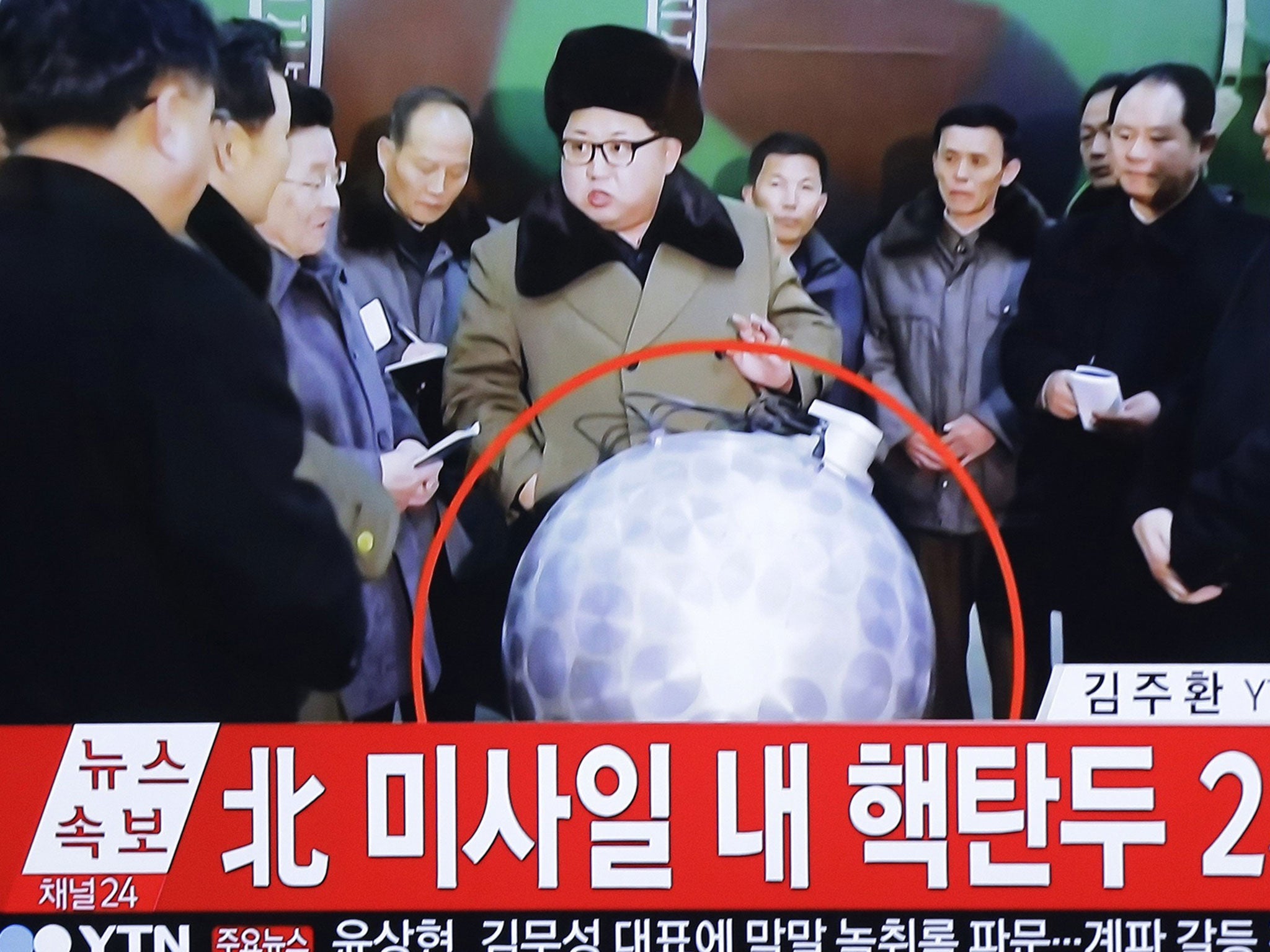North Korea claims it can 'wipe out' Manhattan with a single H-bomb

Your support helps us to tell the story
From reproductive rights to climate change to Big Tech, The Independent is on the ground when the story is developing. Whether it's investigating the financials of Elon Musk's pro-Trump PAC or producing our latest documentary, 'The A Word', which shines a light on the American women fighting for reproductive rights, we know how important it is to parse out the facts from the messaging.
At such a critical moment in US history, we need reporters on the ground. Your donation allows us to keep sending journalists to speak to both sides of the story.
The Independent is trusted by Americans across the entire political spectrum. And unlike many other quality news outlets, we choose not to lock Americans out of our reporting and analysis with paywalls. We believe quality journalism should be available to everyone, paid for by those who can afford it.
Your support makes all the difference.North Korea has claimed that it could wipe out Manhattan by sending a hydrogen bomb on a ballistic missile to the heart of New York, the latest in a string of brazen threats.
Although there are many reasons to believe that Kim Jong Un’s regime is exaggerating its technical capabilities, the near-daily drumbeat of boasts and warnings from Pyongyang underlines the regime’s anger at efforts to thwart its ambitions.
“Our hydrogen bomb is much bigger than the one developed by the Soviet Union,” DPRK Today, a state-run outlet that uses the official acronym for North Korea, reported Sunday.
“If this H-bomb were to be mounted on an inter-continental ballistic missile and fall on Manhattan in New York City, all the people there would be killed immediately and the city would burn down to ashes,” the report said, citing a nuclear scientist named Cho Hyong Il.
The website is a strange choice for issuing such a proclamation, given that it also carried reports about rabbit farming and domestically made school backpacks.
North Korea’s newly developed hydrogen bomb “surpasses our imagination,” Cho is quoted as saying, because it is many times as powerful as anything the Soviet Union had.
“The H-bomb developed by the Soviet Union in the past was able to smash windows of buildings 1,000 kms away and the heat was strong enough to cause third-degree burns 100 kms away,” the report continued.
Kim in January ordered North Korea’s fourth nuclear test and claimed that it was a hydrogen bomb, not a simple atomic one. But most experts are skeptical of the claim, saying the seismic waves caused by the blast were similar to those caused by the North’s three previous tests.
Then in February, Kim oversaw the launch of what North Korea said was a rocket that put a satellite into orbit but that is widely considered part of a long-range ballistic missile program.
North Korea has made advances in its inter-continental ballistic missile program, and experts generally conclude that the United States’ West Coast might now be in reach but that there has been no suggestion that the North would be able to hit the East Coast.
Many experts are also skeptical of the “miniaturized warhead” that Kim showed off last week during a visit to a nuclear weapons plant, saying it doesn’t look right.
But Jeffrey Lewis, director of the East Asia nonproliferation program at the Middlebury Institute of International Studies at Monterey, warned against dismissing it too soon.
“It does not look like US devices, to be sure, but it is hard to know if aspects of the model are truly implausible or simply that North Korean nuclear weapons look different than their Soviet and American cousins,” Lewis wrote in an analysis for 38 North, a website devoted to North Korea. “The size, however, is consistent with my expectations for North Korea.”
As international condemnation of the North’s acts mounted, culminating in the toughest U.N. sanctions against Pyongyang yet, Kim’s regime has become increasingly belligerent, firing missiles into the Sea of Japan, also known as the East Sea, and issuing a new threat or denunciation almost every day.
The sanctions coincide with annual spring drills between the U.S. and South Korean militaries, which Pyongyang considers a rehearsal for an invasion. The current exercises are particularly antagonistic because special forces are practicing “decapitation strikes” on regime leaders and taking out nuclear and missile sites.
On Friday, North Korea’s state media reported that Kim had ordered more nuclear tests, while the North’s Korean People’s Army warned in a statement Saturday that it would counter the drills by “liberat[ing] the whole of south Korea including Seoul. . . with an ultra-precision blitzkrieg strike of the Korean style.”
South Korea’s Defense Ministry urged Pyongyang to stop its threats and provocations.
“If the North continues to make provocations despite the stern warnings made by our military, it is inevitable for us to roll out a strict response that may lead to the destruction of the Pyongyang regime,” South Korea’s Joint Chiefs of Staff said in a statement, according to the Yonhap News Agency.
Additional reporting yoonjung Seo
Copyright: Washington Post
Join our commenting forum
Join thought-provoking conversations, follow other Independent readers and see their replies
Comments